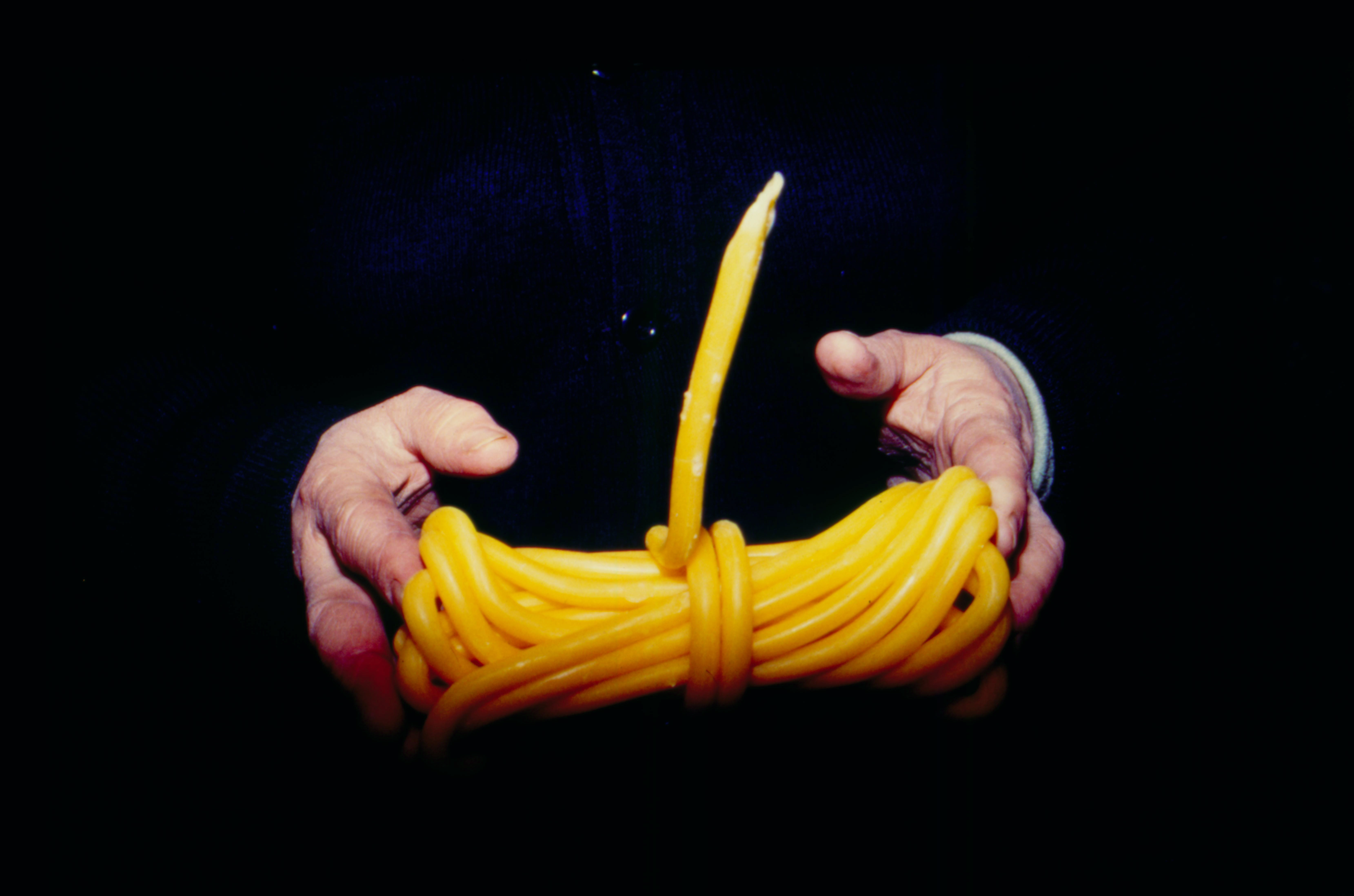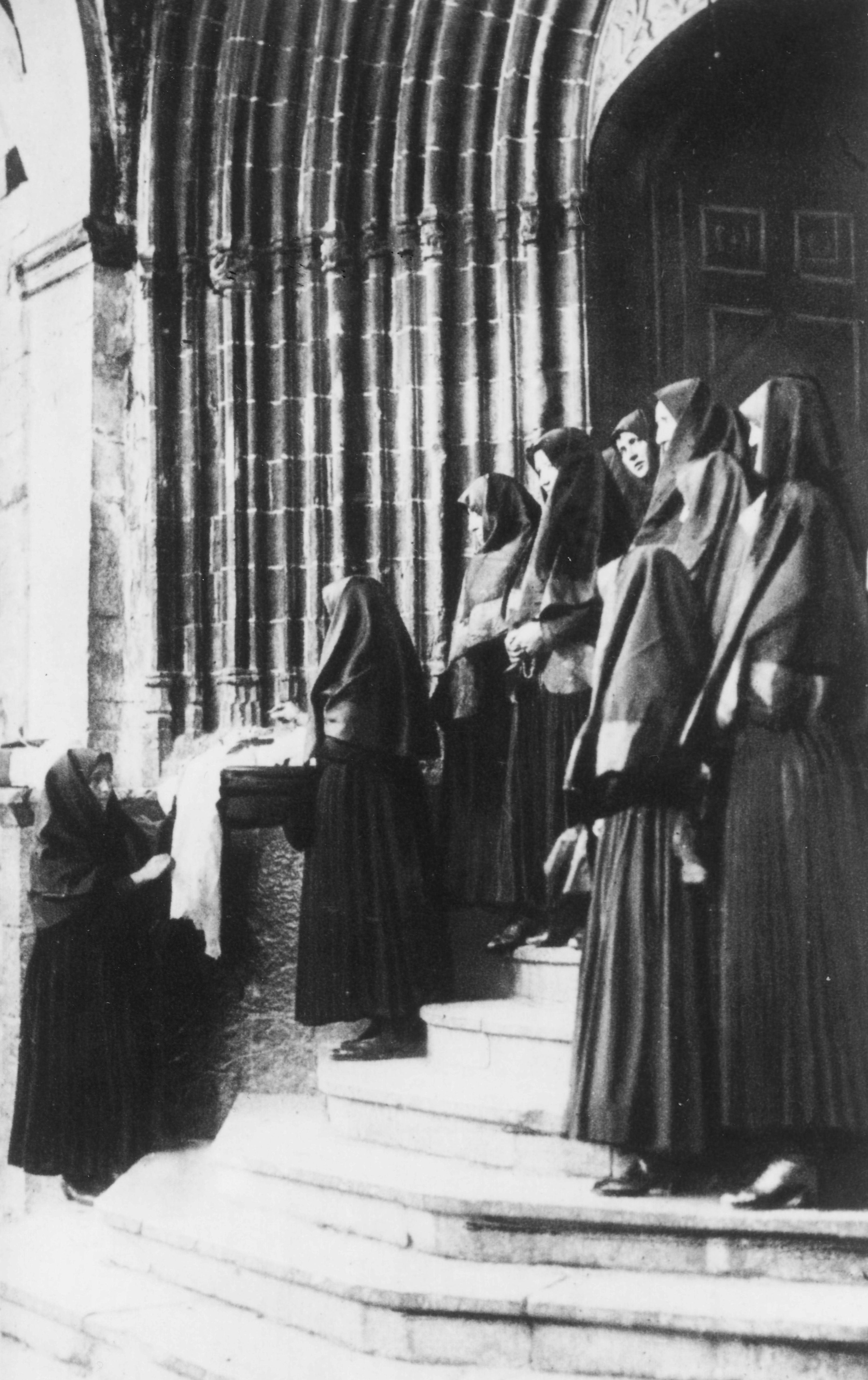Basque ethnography at a glance

Grave beeswax candle. Labayru Fundazioa Photographic Archive.
Field research shows relevant participants in old-time funeral processions, usually relatives or neighbours of the deceased, bore offerings of bread and light to be placed on the symbolic family grave in church. This tradition remained in many parishes until the 1960s.
The figure of one or more women bearing baskets with offerings of bread in funeral processions was rooted deep in Álava, Bizkaia, Gipuzkoa and much of Zuberoa. In some localities they marched in front, even ahead of the processional cross, as implied by the name aurrogia given to both the bread and its bearers, and in others beside the coffin or immediately behind it. In Amurrio (Álava) two village women dressed in mourning would lead the cortege carrying bread offerings in long baskets covered with black cloth on their heads.

Offering bearers in Otsagabia (Navarre). Labayru Fundazioa Photographic Archive.
The offering of bread was gradually replaced by the ritual use of the light of beeswax candles of various shapes and sizes. In Bedia (Bizkaia) a woman bearing a basket on her head with a loaf of bread and four small candles led the procession. Another woman marched at the rear carrying a basket with two four-pound loaves of bread. In Amezketa (Gipuzkoa) an unmarried woman or a close female neighbour to the bereaved family walked behind the coffin carrying a basket with a bundle of beeswax (ezko bildua) and other two strips of candle wrapped around a piece of wood (argizaiolak), along with bread. In Lekaroz (Navarre) it used to be the next-door housewife (barridea) who bore the basket with the wax for the dead in the procession, and all women attendants at the funeral likewise contributed their rolls of wax to be lit at the church grave.
In Lower Navarre and Zuberoa it was customary for the nearest neighbour to carry the beeswax (ezkoa) offering. She occupied a prominent place among female processioners during the conveyance of the body to church. Being the bearer of light and often responsible for the lights during burial rites, she was known as ezko-anderea or argizaina.
There once existed a widely held belief that souls feed on bread offerings (olatak) deposited at the family grave. In Aretxabaleta (Gipuzkoa) the loaves were said to weigh less after been offered to the dead. In Liginaga (Zuberoa) and also in Bermeo (Bizkaia) they believed that bread provided nourishment for the soul of the person to whom it was presented.
Similarly, grave candles were believed to light (argi egin) the soul’s journey after death. The activation of the lights continued during the mourning period and on all holy days at the very least. In Hazparne (Lapurdi), when for whatever reason none of the female members of a household could attend mass to light the memorial wax candle, the woman who assisted with church services (andere serora) thus took care of it, because keeping that flame alive was a sign that their dead had not been forgotten.
Over time, and as a result of the removal of family graves from churches, bread and light offerings were replaced by wreaths and floral arrangements.
Jaione Bilbao – Ethnography Department – Labayru Fundazioa
(Adapted from Funeral Rites, part of the Ethnographic Atlas of the Basque Country collection)

